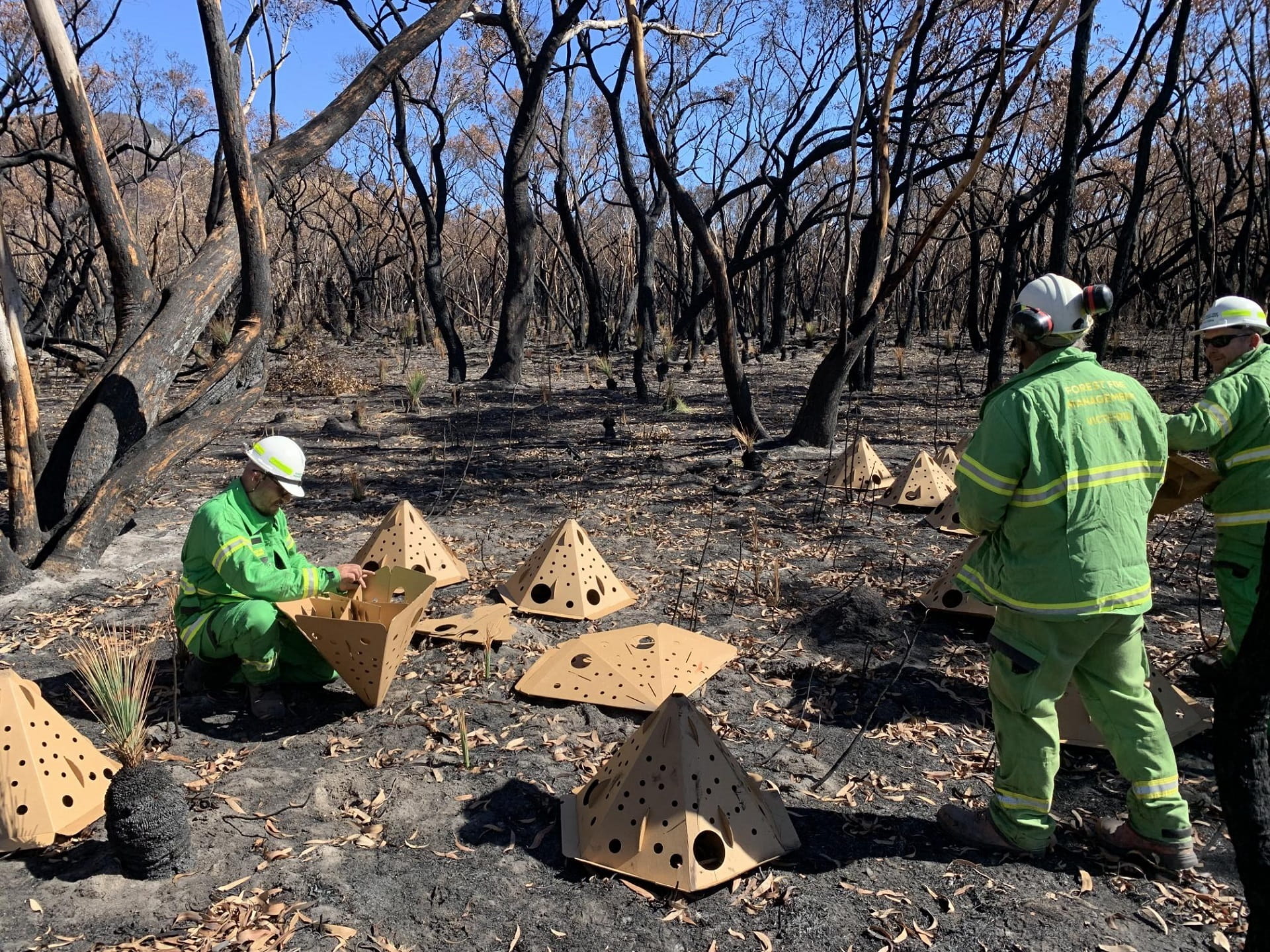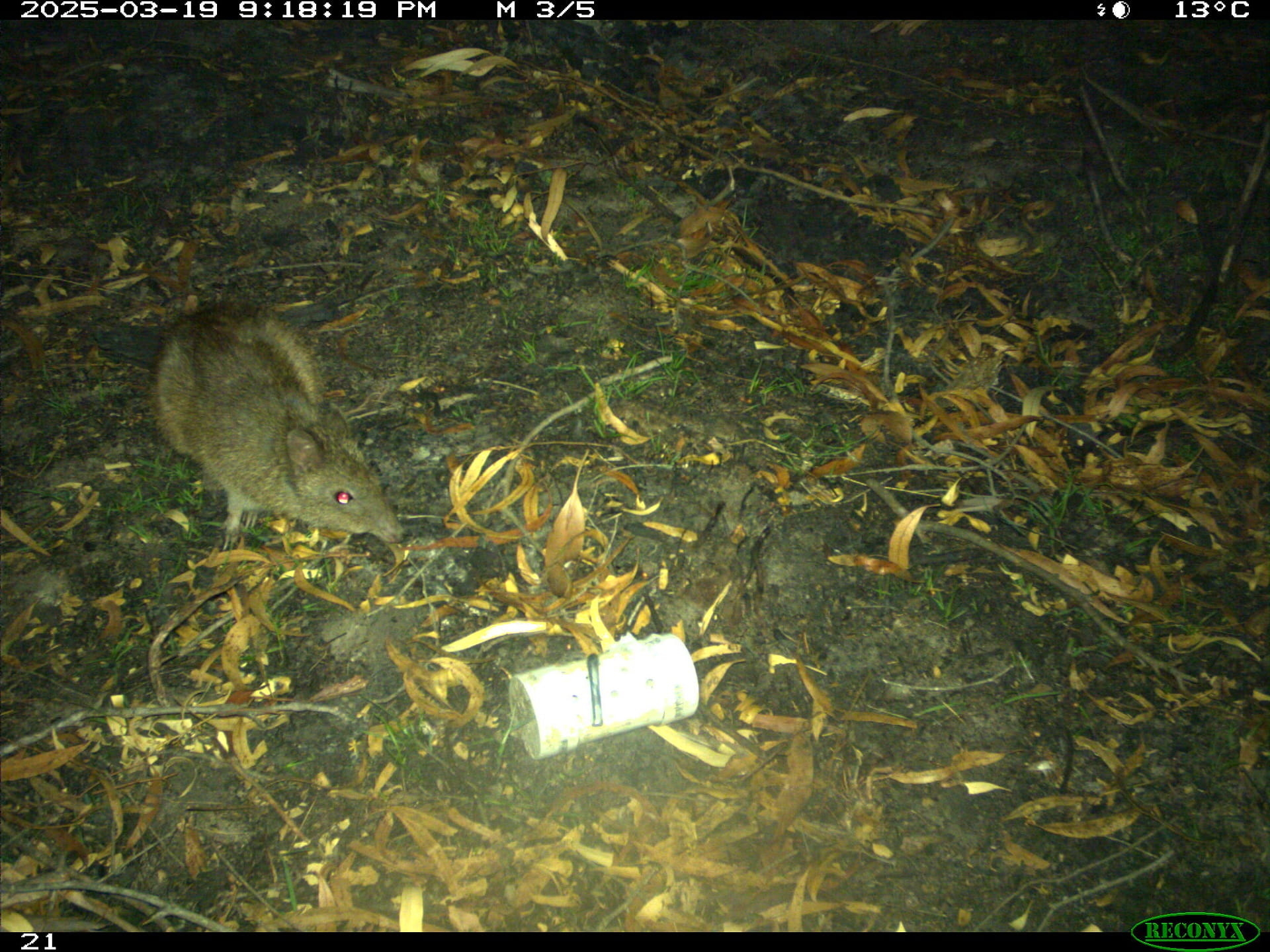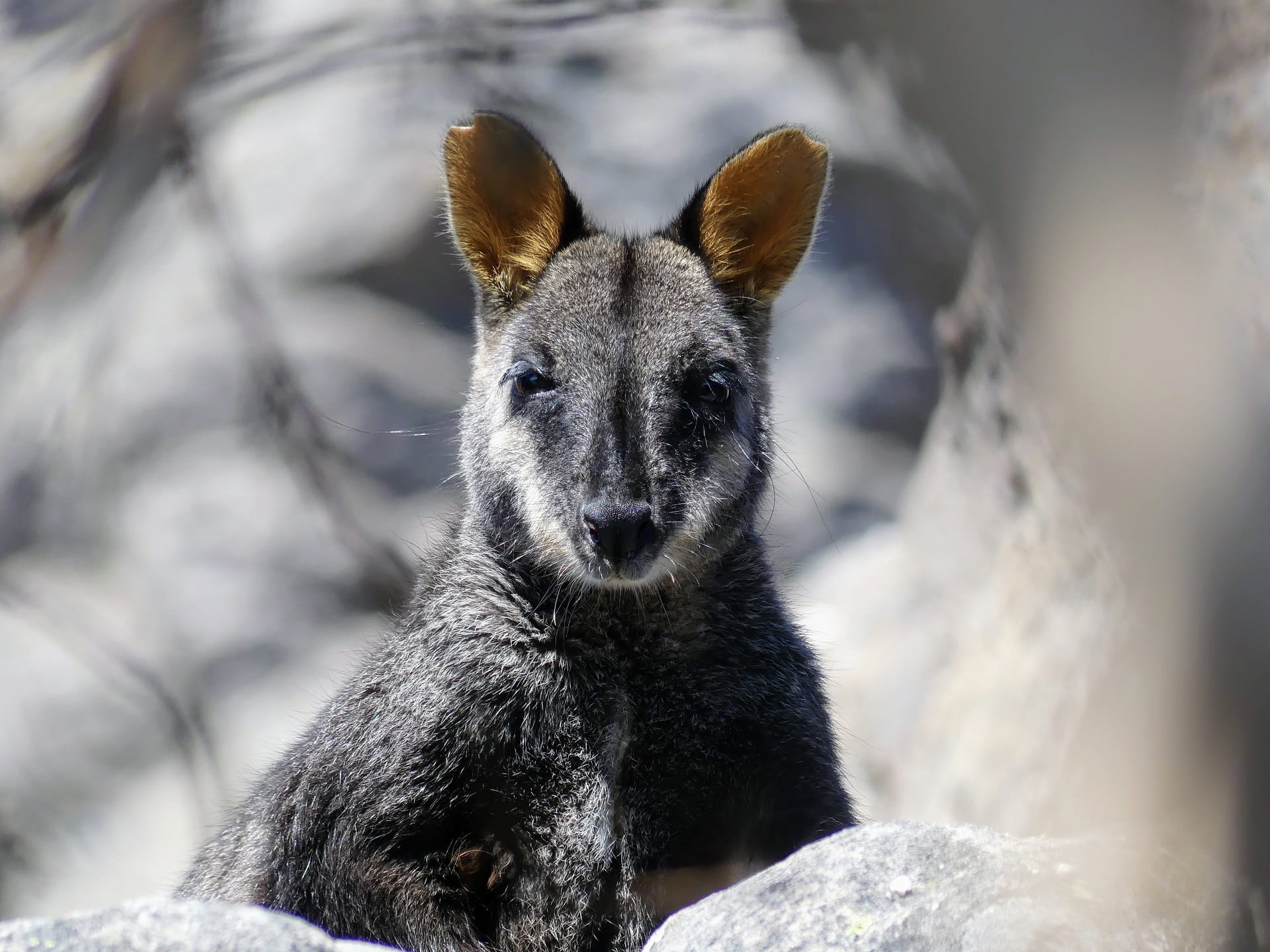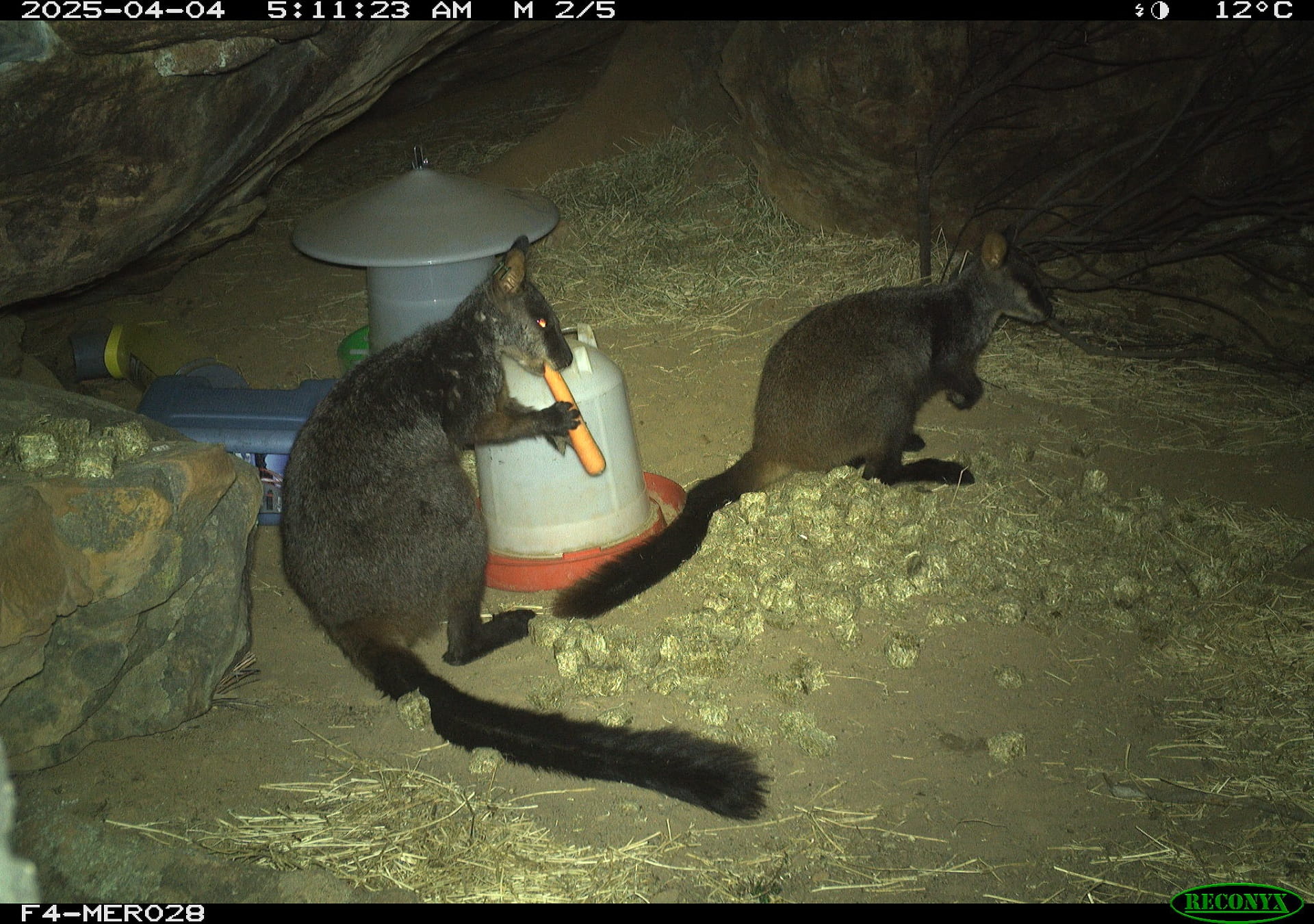As the 2024-25 summer bushfires burned in the Grampians (Gariwerd) National Park, recovery teams raced against time to save the landscape's unique and endangered native animals.
When animals or plants are listed as threatened it means they are on a sliding scale of being at risk of extinction.

An emergency feeding operation commenced within days of the fire being contained. This included food drops from drones and helicopters which moved bulk food supplies to critical monitored feeding stations
Living in the understory of the of the park's mixed forest and heathlands were small mammals including the Long-nosed Potoroo, Southern-Brown Bandicoot, Heath Mouse, and the Smoky Mouse.
With their habitat destroyed by the fires that burnt nearly 80% of the park, providing food and shelter was critical.
Volunteers and local community organisations including Friends of the Grampians and Halls Gap Landcare helped assemble more than 350 habitat pods to protect small animals.

More than 350 temporary habitat pods have been set up in the fire affected areas of the park
Foxes and feral cats are quick to prowl freshly burnt country in search of vulnerable small animals and reptiles whose shelter has been destroyed by fire.
It's hoped they will make use of the habitat pods which have a lifespan of around two years and compost gradually as the native vegetation recovers.

A feral cat is captured by a remote monitoring camera after bushfires burnt almost 80% of the park
Joseph Terry is part of the Grampians Ark project which has protected native animals from foxes in the Grampians (Gariwerd) National Park since 2005.
It is an ongoing, joint effort by the Department of Energy, Environment and Climate Action (DEECA), and Parks Victoria.
Almost 80 foxes have been removed from the landscape since the fires, and now the team's ability to monitor critical animals during initial recovery works has improved.
"As well as setting up more than 350 habitat pods, we installed 120 cameras to monitor the habitat pods and support the recovery effort," Joseph said.

The first remote camera sighting of a Long-nosed Potoroo was a highlight for the recovery teams
"Our first camera image of a Long-nosed Potoroo after the fire was taken in March, marking a significant moment for celebration. Given their critical condition in the aftermath of the fire, it has taken months of dedicated effort to achieve this first positive sighting," Joseph said.
"Additionally, we captured camera trap images of our endangered smoky mice in the Victoria Range following the fire, thanks to the efforts of our partners at Museums Victoria, Zoos Victoria, and Wimmera Catchment Management Authority."
Critically endangered Brush-tailed Rock-wallaby

A Brush-tailed Rock-wallaby photographed in the Grampians (Gariwerd) National Park after the summer bushfires (credit Matt Rogers)
The park's many caves and terraces are home to a small colony of critically endangered Brush‐tailed Rock‐wallaby. In Victoria it's estimated less than 50 individuals remain in the wild.
In the days and weeks after the fire food was dropped by drone and helicopter in locations the colony were known to live in the hope that they had survived the fires.

Remote monitoring cameras capture Brush-tailed Rock-wallabies at one of the remote ground feeding stations
Ground feeding operations began in February at 17 monitored feeding stations along 5km of the escarpment.
These stations have been serviced weekly, with a total of 11 feeding operations conducted so far, covering more than 110km.
"We have confirmed the presence of Brush-tailed Rock-wallaby actively feeding and drinking at all 17 ground-feeding stations, including the eastern escarpment," Joseph said.

Joseph Terry, Project Manager Grampians Ark and Matthew Rogers, Field Ranger conduct ground feeding operations
"Not only have camera images confirmed the survival of the Brush-tailed Rock-wallaby colony we know there are at least three separate joeys," Joseph said.
"At the beginning (of the fires) I was feeling a mixture of exhaustion and grief for the land we care for, especially the small mammals being our (Grampians Ark) whole remit. That's still the case for the small mammals and birds," he said.
But for Joseph Terry and many others on the ground, seeing images of the joeys and the Long-nosed-Potoroo was a welcome relief.
Parks Victoria are working with the Barengi Gadjin Land Council, Eastern Maar Aboriginal Corporation and the Gunditj Mirring Aboriginal Corporation during this recovery project
We acknowledge that the fire has affected the Country of the Djab Wurrung, Jadawadajali and Gunditjmara peoples who have occupied, cultivated and shaped the Gariwerd Landscape for thousands of generations.
The Nationally Heritage Listed bio-cultural landscape reflects countless generations of skills, knowledge and culture.






